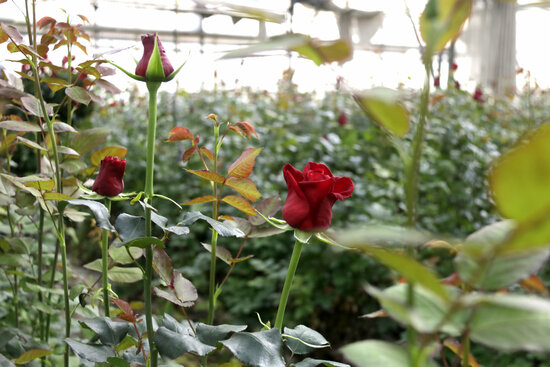Fewer Catalan roses for this year’s Sant Jordi festival
Local production has fallen 60% in three years, with just two growers remaining

On the day of Sant Jordi, a very important celebration of romance and literature in Catalonia taking place on April 23, it’s tradition that people gift each other roses and books. However, this year fewer of these roses will be Catalan-grown.
Over just three years, local production of roses for Sant Jordi have fallen 60% - this year only 100,000 are being grown in the country, down from 250,000 in 2018.
This fall in production has come as a result of many farms reducing their area dedicated to the crop or ceasing growing the flower completely. Out of the five farms that were committed to growing these flowers only two remain, one in Santa Susanna and one in Teià.
Toni Bertran, from Bertran Mas Flowers located in Teià, told the Catalan News Agency (ACN) that it has been difficult to compete with imported products. He explained that these foreign flowers are high quality and are also priced competitively.
Despite this, the red rose grown in the Maresme region of Eastern Catalonia is actually more competitively priced than normal this year. This is due to the impact that the pandemic has had on foreign markets, such as that of Holland or South America.
Due to the reduction in competition, local producers have also been able to make better margins, now being able to “increase the price around ten to fifteen cents per stem.”
However, despite the pandemic, the downward trend in local production continues. Not only are the two farms in Teià and Santa Susanna, where Pons Flowers is based, the last two growers out of the initial five, but even they are planning on reducing their production.
Betran explained, “Four years ago I had 2.5 hectares, and now I have 1.2 hectares.”
He is pessimistic about the future of local production, saying that it is “practically impossible” to compete. “Our idea is to keep cutting down the amount of roses we plant and replace them with other varieties, little by little. In the future, we will probably end up replacing the entire area that was once dedicated to this crop,” he has admitted.
Biscuit roses
However, there is one type of Catalan rose which does not plan to die out: the El Rosal social workshop, in Tàrrega in Western Catalonia which makes edible roses out of biscuits, plans to sell around 15,000 units for Sant Jordi.
After a difficult year for sales in 2020 due to the outbreak of the pandemic, the head of the organization, Núria Cendoya, notes that things are different this year. She says that you can tell that people want to go out, give gifts and celebrate, unlike during the confinement.
She emphasizes that the cookies they will be distributing this year are specifically made to endure transportation, meanwhile they also plan to ship their chocolate roses across Catalonia and even to some places throughout Europe.